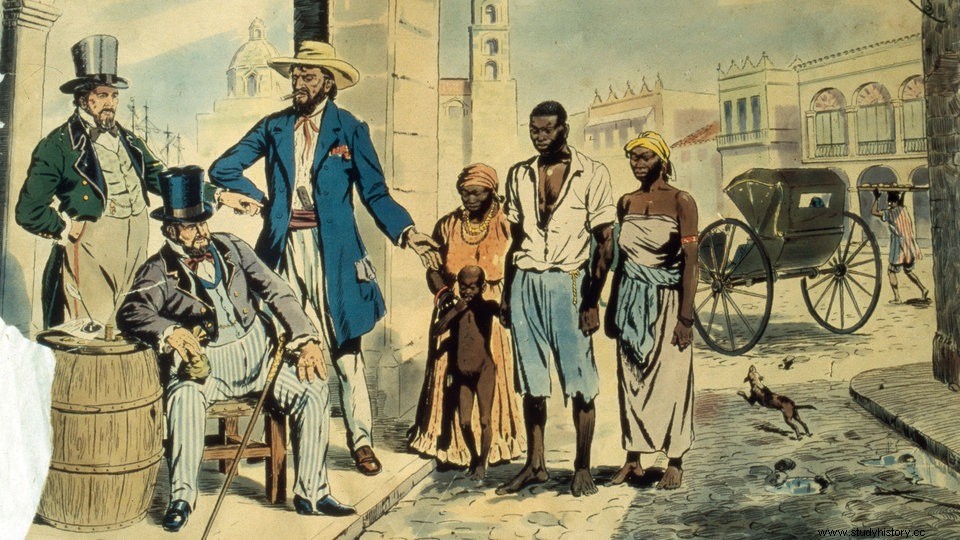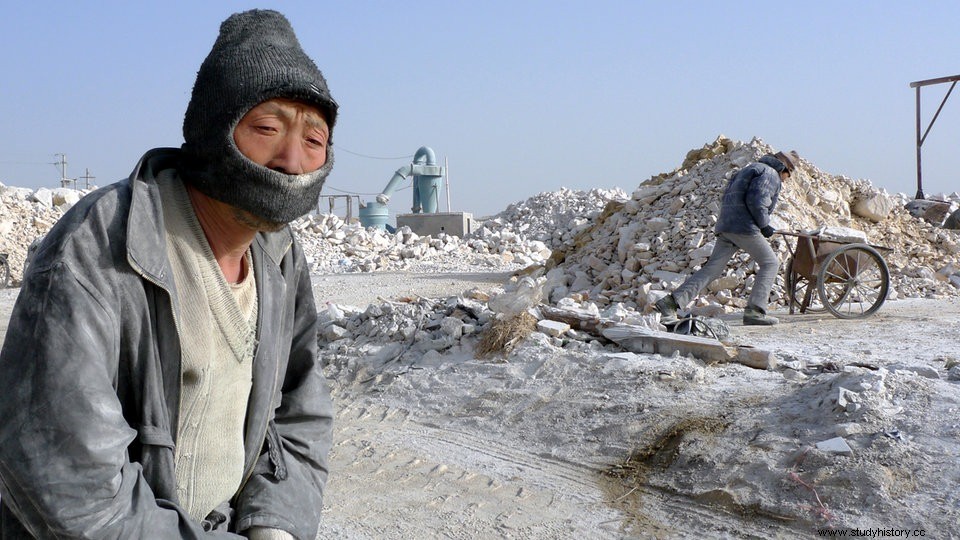For millennia, people have lived in unfree living and working conditions. To this day, slavery is widespread in all parts of the world:as child labor and forced prostitution, but also on huge plantations and in dangerous mines.
Early forms of slavery
A slave is a disenfranchised person who is held against their will, kidnapped, mistreated and economically exploited. A slave is a human being made the property of another human being.
Slavery is an expression of violence between people or human societies. Slavery is an act of submission that dates back to the dawn of human culture.
Instead of killing the defeated enemies after a war, some peoples and groups began to capture, abduct and exploit them.
Indebtedness, punishment, discrimination, and greed are the main drivers of human possession and enslavement as a commodity.

Slaves played an important role in ancient Egypt
Slavery was widespread in ancient civilizations. The ancient oriental societies of Mesopotamia, Egypt, Greece, Rome - most of these ancient cultures would have been inconceivable without the systematic disenfranchisement and exploitation of the slave class.
In ancient Greece, slavery relieved the Athenian citizens, giving them enough leisure and free time to attend to political affairs and participate in democratic society. And the Roman Empire was also a slave-owning society.
In the heyday of Rome, 20,000 Roman citizens faced 400,000 slaves who worked in all walks of life without pay.
Slavery in Africa and the Arab countries
Between the 8th and 12th centuries, the Islamic Arab region was a dynamic region with a great need for slaves.
In the Middle Ages, mainly slaves were deported here from Eastern Europe across the Black Sea and from Central Europe (via Magdeburg, Regensburg, Mainz, Prague, Venice, Verdun, Narbonne and Barcelona).
The word "slave" may have originally come from the Arabic term "saqaliba", from which the ethnic term "Slav" is also derived.
Historians estimate that the slave trade in the Arab region between the 7th and the 20th century was roughly on a par with the slave trade in the Atlantic-American region between 1450-1860.
Slavery existed in other parts of Africa long before America was conquered. Since ownership in Africa does not primarily mean control of land in the traditional sense, but control of people, it made sense to swap or sell people.
Between the 7th and 20th centuries, millions of people were sold into slavery in Africa, both via the north and the Sahara and via the east – via the Red Sea and the Indian Ocean.
Finally, in the age of colonization, the slave trade also began on the African west coasts, which in turn sold and deported millions of Africans to the American continent.

Arab slavers raid a village in Black Africa
Transatlantic Slave Trade
This probably most notorious phase in the history of slavery began with the conquest of America in 1492. The west coast of Africa, previously occupied by Europeans, subsequently became the most important trading center for slaves.
The European colonial powers drove millions of black Africans into slavery in order to sell them on plantations in Brazil, the Caribbean and the southern United States.
This slave transfer to America lasted around 400 years. Especially in the 17th century, the demand for cheap labor for the sugar cane, cotton, and tobacco plantations on the American continent was enormous.
The Age of Enlightenment changed the mood in Europe and the first protests against slavery became loud. The abolition of slavery was eventually initiated by several factors:by the self-emancipation of the slaves, for example during the famous slave rebellion on Saint-Domingue (modern-day Haiti) 1791-1803, by religiously motivated groups such as the Quakers, who opposed the slave trade, and by the Movement of the abolitionists (English abolition =abolition, repeal).
Denmark outlawed the human trade in 1722, and England followed suit in 1807. The abolition of slavery in the southern United States at the end of the American Civil War in 1865 marked the end of institutionally legitimate slavery in the industrialized nations.
Finally, at the end of the 19th century, the slave trade was formally banned on the African continent.

Slave market in Havana (Cuba)
Modern slavery
Today, all countries around the world have officially abolished slavery, most recently the African state of Mauritania in 1980. But the abolition only exists on paper - the slavery phenomenon is unbroken.
Forms of modern slavery include political imprisonment, child labour, forced prostitution, the recruitment of child soldiers, as well as the classic forms of serfdom and economic exploitation.
The renowned American slavery researcher Kevin Bales distinguishes the old slavery of earlier times from the manifestations of modern slavery, which today elude any legal legality:
"In the past, slavery meant that one person legally owned another; in modern slavery, this is not the case. Today, slavery is forbidden worldwide, so it is no longer possible to legally own people.
Today, when one buys slaves, one does not ask for a receipt or title deed, but acquires power over another and uses violence to maintain it.
Slave owners enjoy all the benefits of ownership without being legally entitled to it. In fact, it is even advantageous for slave owners to be illegitimate owners, since it allows them to control the slaves completely without assuming any responsibility for them. Therefore, I prefer the term slave owner to the term slave owner."
In Bales' assessment, the lack of legality in modern forms of slavery actually works to the detriment of the enslaved people and to the advantage of the slave owners. Bales estimates that at least 27 million people live in conditions similar to slavery today. The Global Slavery Index estimates 40 million slaves. The number of unreported cases is probably considerably higher.

Slave labor in the Chinese province of Xinjiang
